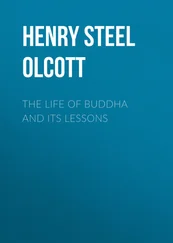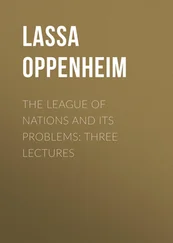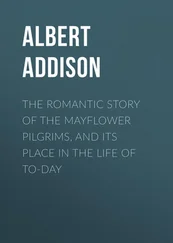William Bryan - The Old World and Its Ways
Здесь есть возможность читать онлайн «William Bryan - The Old World and Its Ways» — ознакомительный отрывок электронной книги совершенно бесплатно, а после прочтения отрывка купить полную версию. В некоторых случаях можно слушать аудио, скачать через торрент в формате fb2 и присутствует краткое содержание. Жанр: foreign_antique, foreign_prose, на английском языке. Описание произведения, (предисловие) а так же отзывы посетителей доступны на портале библиотеки ЛибКат.
- Название:The Old World and Its Ways
- Автор:
- Жанр:
- Год:неизвестен
- ISBN:нет данных
- Рейтинг книги:4 / 5. Голосов: 1
-
Избранное:Добавить в избранное
- Отзывы:
-
Ваша оценка:
- 80
- 1
- 2
- 3
- 4
- 5
The Old World and Its Ways: краткое содержание, описание и аннотация
Предлагаем к чтению аннотацию, описание, краткое содержание или предисловие (зависит от того, что написал сам автор книги «The Old World and Its Ways»). Если вы не нашли необходимую информацию о книге — напишите в комментариях, мы постараемся отыскать её.
The Old World and Its Ways — читать онлайн ознакомительный отрывок
Ниже представлен текст книги, разбитый по страницам. Система сохранения места последней прочитанной страницы, позволяет с удобством читать онлайн бесплатно книгу «The Old World and Its Ways», без необходимости каждый раз заново искать на чём Вы остановились. Поставьте закладку, и сможете в любой момент перейти на страницу, на которой закончили чтение.
Интервал:
Закладка:
In this connection a word should be said in regard to the Geisha girls who have furnished such ample material for the artist and the decorator. They are selected for their beauty and trained in what is called a dance, although it differs so much from the American dance as scarcely to be describable by that term. It is rather a series of graceful poses in which gay costumes, dainty fans, flags, scarfs and sometimes parasols, play a part. The faces of the dancers are expressionless and there is no exposure of the limbs. The Geisha girls are often called in to entertain guests at a private dinner, the performance being before, not after, the meal.
Our first introduction to this national amusement was at the Maple Club dinner given at Tokyo by a society composed of Japanese men who had studied in the United States. The name of the society is a Japanese phrase which means the "Friends of America." The Maple Club is the most famous restaurant in Japan, and the Geisha girls employed there stand at the head of their profession. During the dancing there is music on stringed instruments, which resembles the banjo in tone, and sometimes singing. At the Maple Club the Geisha girls displayed American and Japanese flags. We saw the dancing again at an elaborate dinner given by Mr. Fukuzawa, editor of the Jiji Shimpo. Here also the flags of both nations were used.
In what words can I adequately describe the hospitality of the Japanese? I have read, and even heard, that among the more ignorant classes there is a decided anti-foreign feeling, and it is not unnatural that those who refuse to reconcile themselves to Japan's new attitude should blame the foreigner for the change, but we did not encounter this sentiment anywhere. Never in our own country have we been the recipients of more constant kindness or more considerate attention. From Marquis Ito down through all the ranks of official life we found everyone friendly to America, and to us as representatives of America. At the dinner given by Minister Griscom there were present, besides Marquis Ito, the leader of the liberal party, Count Okuma, the leader of the progressive party (the opposition party), and a number of other prominent Japanese politicians.
At the dinner given by Consul General Miller at Yokohama, Governor Sufu and Mayor Ichihara were present. The state and city officials wherever we have been have done everything possible to make our stay pleasant. The college and school authorities have opened their institutions to us and many without official position have in unmistakable ways shown themselves friendly. We will carry away with us a number of handsome presents bestowed by municipalities, colleges, societies and individuals.
We were entertained by Count Okuma soon after our arrival and met there, among others, Mr. Kato of the state department, and President Hatoyama of the Waseda University, and their wives. The count's house is half European and half Japanese, and his garden is celebrated for its beauty. At Viscount Kana's we saw a delightful bit of home life. He is one of the few daimios, or feudal lords, who has become conspicuous in the politics of Japan, and we soon discovered the secret of his success. He has devoted himself to the interests of agriculture and spent his time in an earnest and intelligent effort to improve the condition of the rural population. He is known as "The Farmer's Friend." His house is at the top of a beautifully terraced hill, which was once a part of his feudal estate. He and his wife and six children met us at the bottom of the hill on our arrival and escorted us to the bottom on our departure. The children assisted in serving the dinner and afterward sang for us the American national air as well as their own national hymn. The hospitality was so genuine and so heartily entered into by all the family that we could hardly realize that we were in a foreign land and entertained by hosts to whom we had to speak through an interpreter.
In the country, fifteen miles from Kagoshima, I was a guest at the home of Mr. Yamashita, the father of the young man, who, when a student in America, made his home with us for more than five years. Mr. Yamashita was of the samurai class and since the abolition of feudalism has been engaged in farming. He had invited his relatives and also the postmaster and the principal of the district school to the noon meal. He could not have been more thoughtful of my comfort or more kindly in his manner. The little country school which stood near by turned out to bid us welcome. The children were massed at a bridge over which large flags of the two nations floated from bamboo poles. Each child also held a flag, the Japanese and American flags alternating. As young Yamashita and I rode between the lines they waved their flags and shouted "Banzai." And so it was at other schools. Older people may be diplomatic and feign good will, but children speak from their hearts. There is no mistaking their meaning, and in my memory the echo of the voices of the children, mingling with the assurances of the men and women, convinces me that Japan entertains nothing but good will toward our nation. Steam has narrowed the Pacific and made us neighbors; let Justice keep us friends.
CHAPTER IV.
JAPAN – HER HISTORY AND PROGRESS
As for the islands themselves, they are largely of volcanic origin, and a number of smoking peaks still give evidence of the mighty convulsions which piled up these masses of masonry. Asosan mountain, on the island of Kyushu, has the largest crater in the world.
Japan is the home of the earthquake. The Japanese Year Book of 1905 is authority for the statement that Japan was visited by 17,750 earthquakes during the thirteen years ending 1887 – an average of more than thirteen hundred a year, or three and a half each day. It is needless to say that a large majority of these were so trivial as to be unnoticed, except by those in charge of the delicate instrument which registers them.
If the average is as great at this time, there have been more than seventy-five since we landed, but we have not been aware of them. The severe shocks have come at periods averaging two and a half years, and the really disastrous ones have been something like fifty years apart. The country about Tokyo is most subject to earthquakes, the last severe one being in 1894. According to an ancient legend, Japan rests upon the back of a large fish and the earthquakes are caused by the moving of the fish. There is a Seismological society in Japan which has published a sixteen-volume work giving all that is scientifically known of the cause and recurrence of these disturbances.
Of the origin of the Japanese themselves nothing certain is known. The best authorities say that they came from the continent in an early Mongol invasion, while others believe that they came from the islands which stretch to the south. One writer announces the theory that they are the lost Israelites. It is quite certain that when the first Japanese landed on the islands they found an earlier race in possession. Some seventeen thousand of these, called Ainus, now occupy the northern extremity of the empire – an indication that the migration was from the southwest. The Ainus have remained distinct; where they have intermarried with the Japanese, the half breeds have died out in the second or third generation. They are a hairy race and in physical characteristics quite different from the Japanese. Their religion is a sort of nature worship, and it is their custom to say a simple grace before eating.
The remoteness of the settlement of Japan is shown by the fact that the reigning family, which claims descent from the gods, has held undisputed sway for twenty-five hundred years, although the record of the first thousand years is so dependent upon verbal tradition that the official history cannot be verified. As concubinage has been practiced from time immemorial, the heir, the oldest son, has not always been born of the empress.
Читать дальшеИнтервал:
Закладка:
Похожие книги на «The Old World and Its Ways»
Представляем Вашему вниманию похожие книги на «The Old World and Its Ways» списком для выбора. Мы отобрали схожую по названию и смыслу литературу в надежде предоставить читателям больше вариантов отыскать новые, интересные, ещё непрочитанные произведения.
Обсуждение, отзывы о книге «The Old World and Its Ways» и просто собственные мнения читателей. Оставьте ваши комментарии, напишите, что Вы думаете о произведении, его смысле или главных героях. Укажите что конкретно понравилось, а что нет, и почему Вы так считаете.












